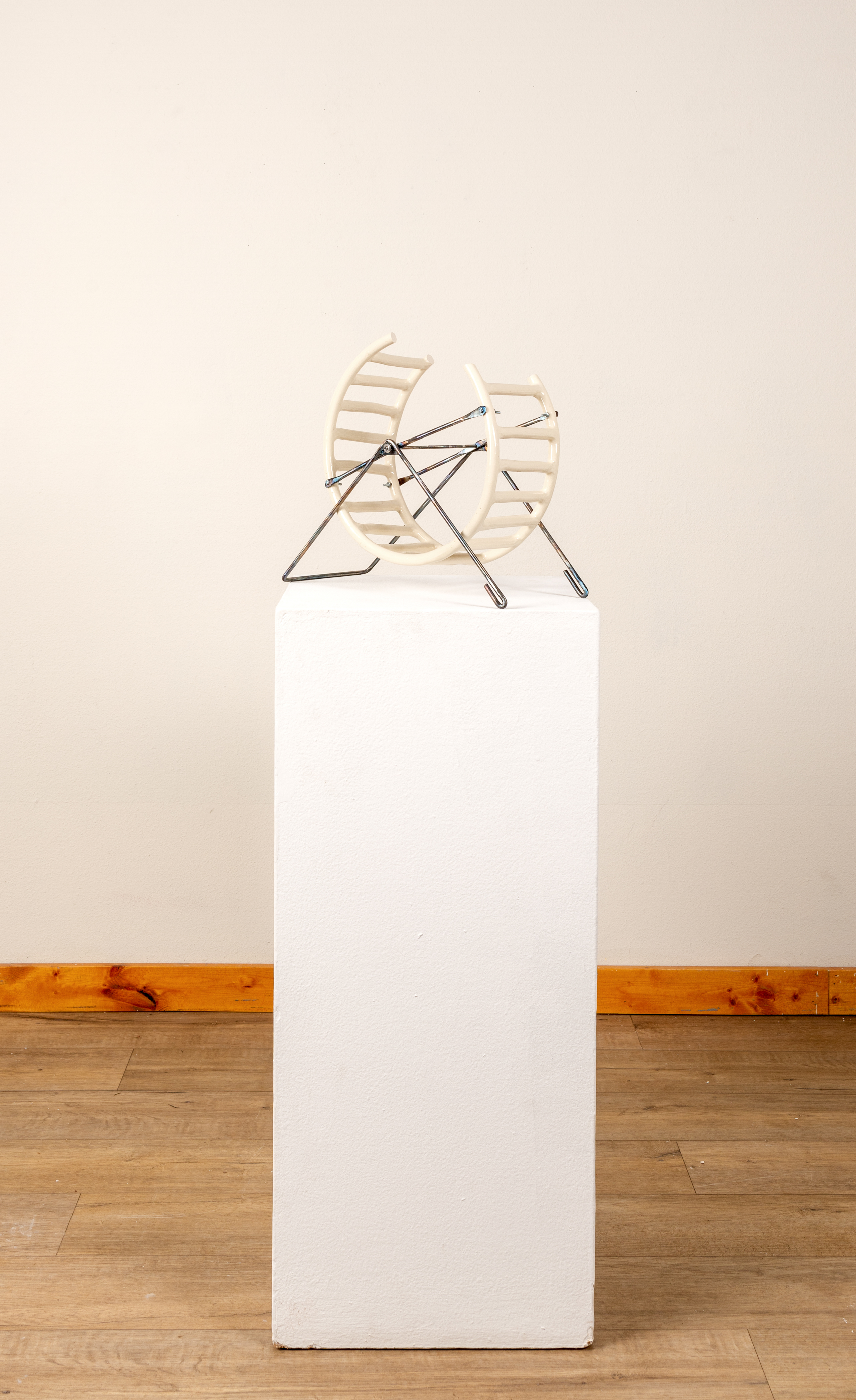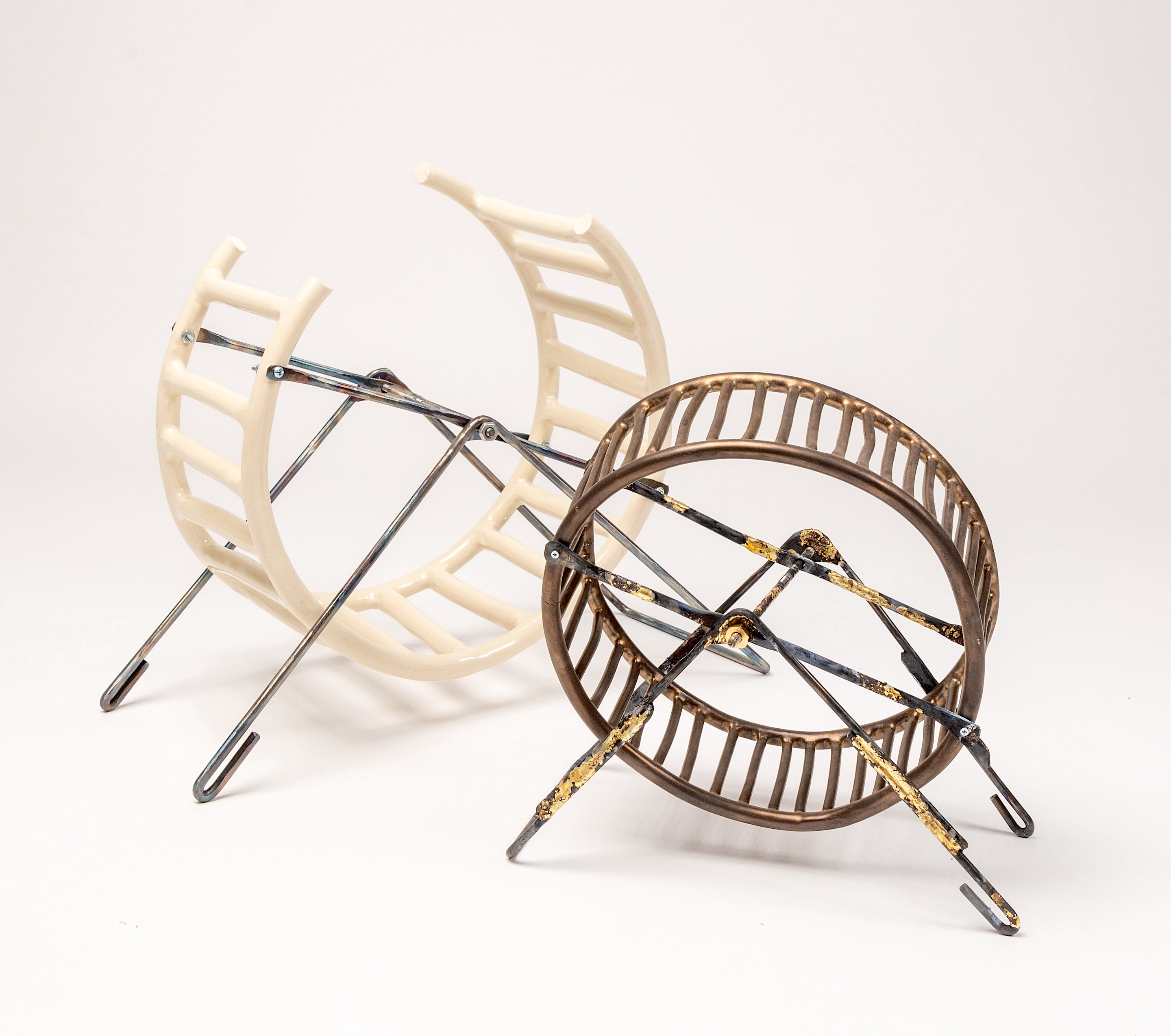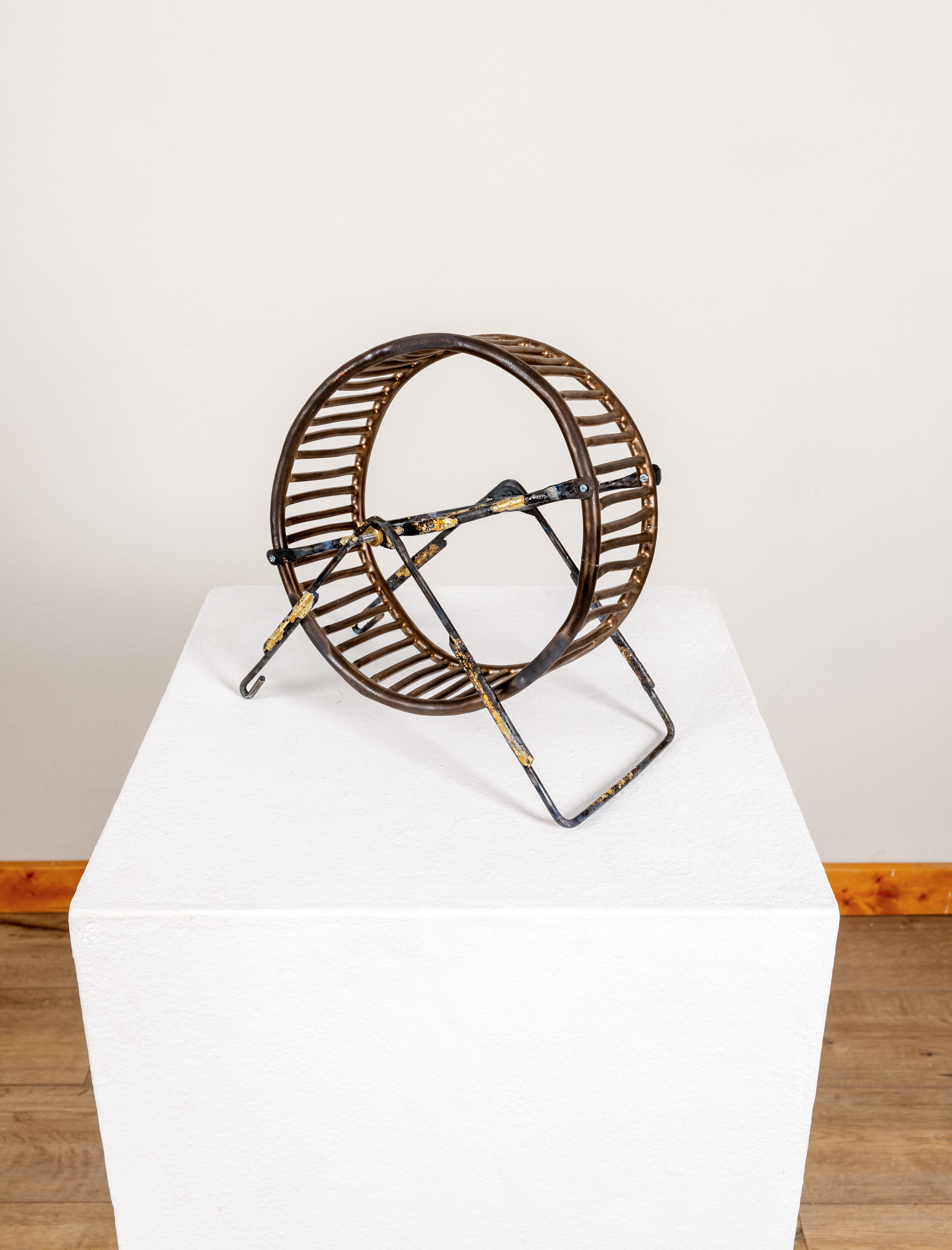Precarity Structures
These ceramic sculptures represent objects that evoke varied degrees of social oppression or economic alienation in states of creep rupture. Creep rupture is where infrastructural materials or machine components degrade over time due to stress.
The chosen objects are often spindly in form, making them challenging to sculpt in clay and push the limits of the material's structural capabilities. This process amplifies a sense of precarity, with ceramic melting into twisted forms that capture a state near failure. The objects hold a desire: How might we achieve the collapse of oppressive systems without descending into total anarchy?
Mind the Gap
2024
Glazed ceramic
19.5” x 12.5” x 12.5”
Photography credit: Matthew Bailey


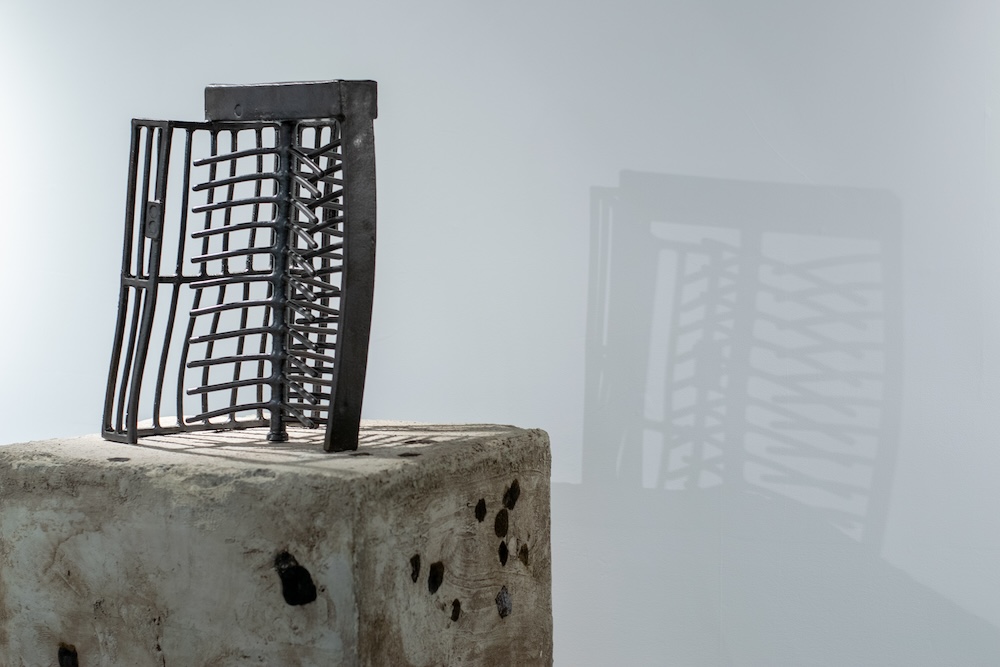
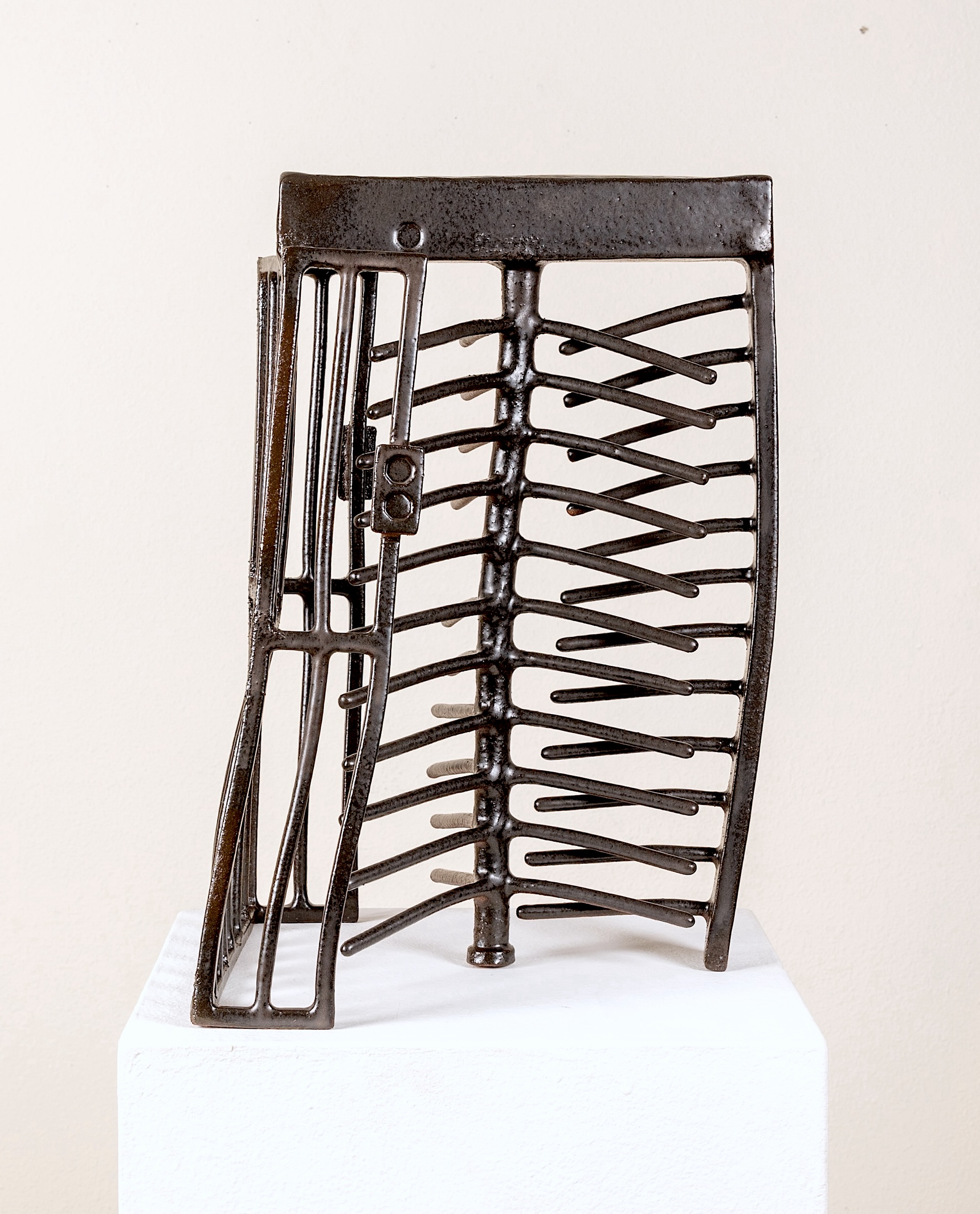
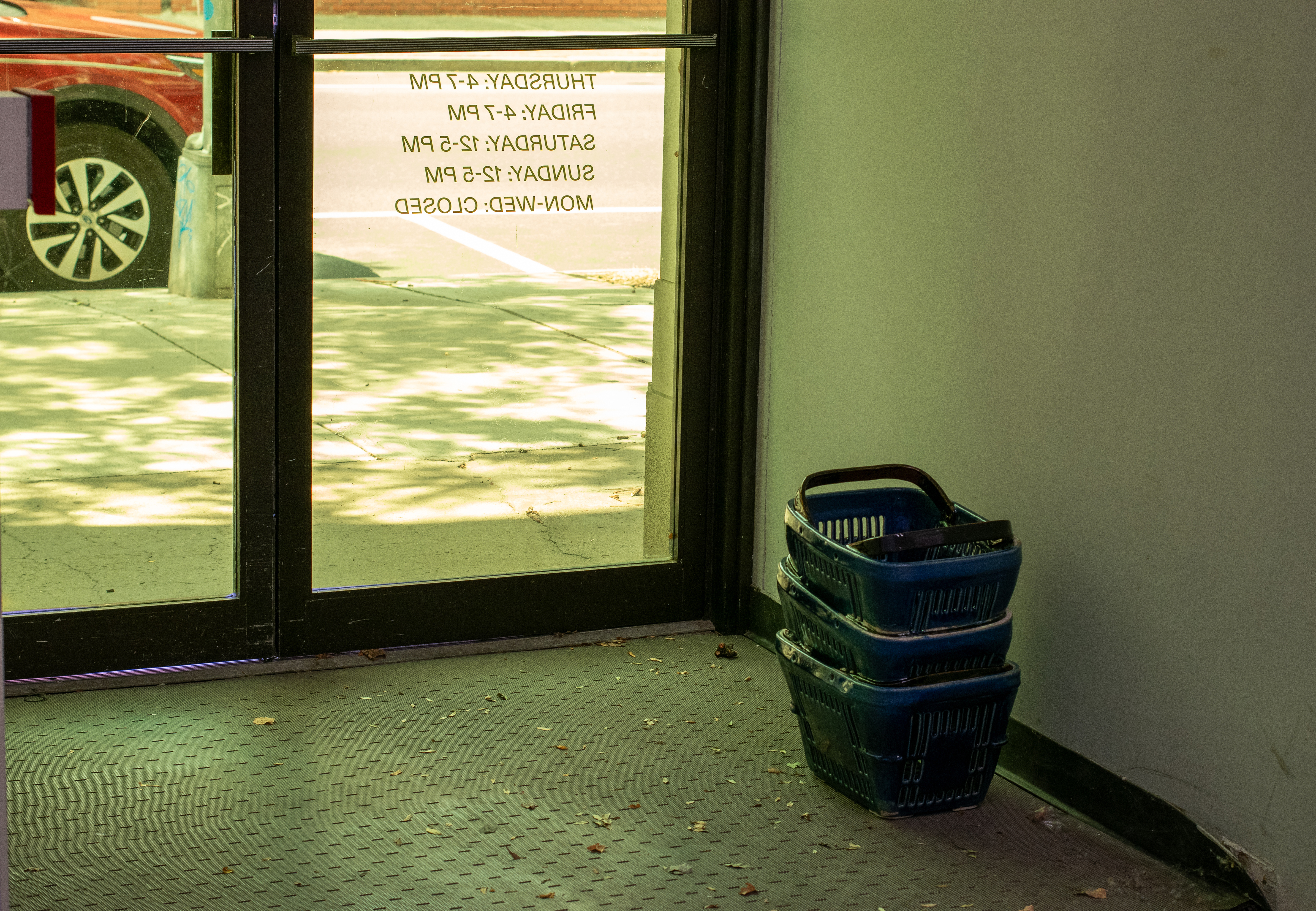
Is it About Capitalism?
2024
Glazed ceramic, sand
12" x 16" x 11"
20" x 16" x 13"
I’m currently experimenting with display methods with these baskets, including placing them in a pile of sand to evoke a dystopian or utopian future where remnants of consumerism are found in a desert. Sand is intriguing as it represents both uninhabitable ruin and unlimited potential. It is a foundational raw material for our built environment—without it, we wouldn’t have concrete, glass, or computers, or the many products and infrastructure those materials enable.
I’ve also placed the baskets inside storefront doors to mimic real ones, using a trompe l'oeil ceramic technique. Viewers often struggle to resist picking them up, a subconscious behavior ingrained from years of shopping. As fused ceramic sculptures, this impulse is disrupted, creating an effect on the viewer that I find compelling.
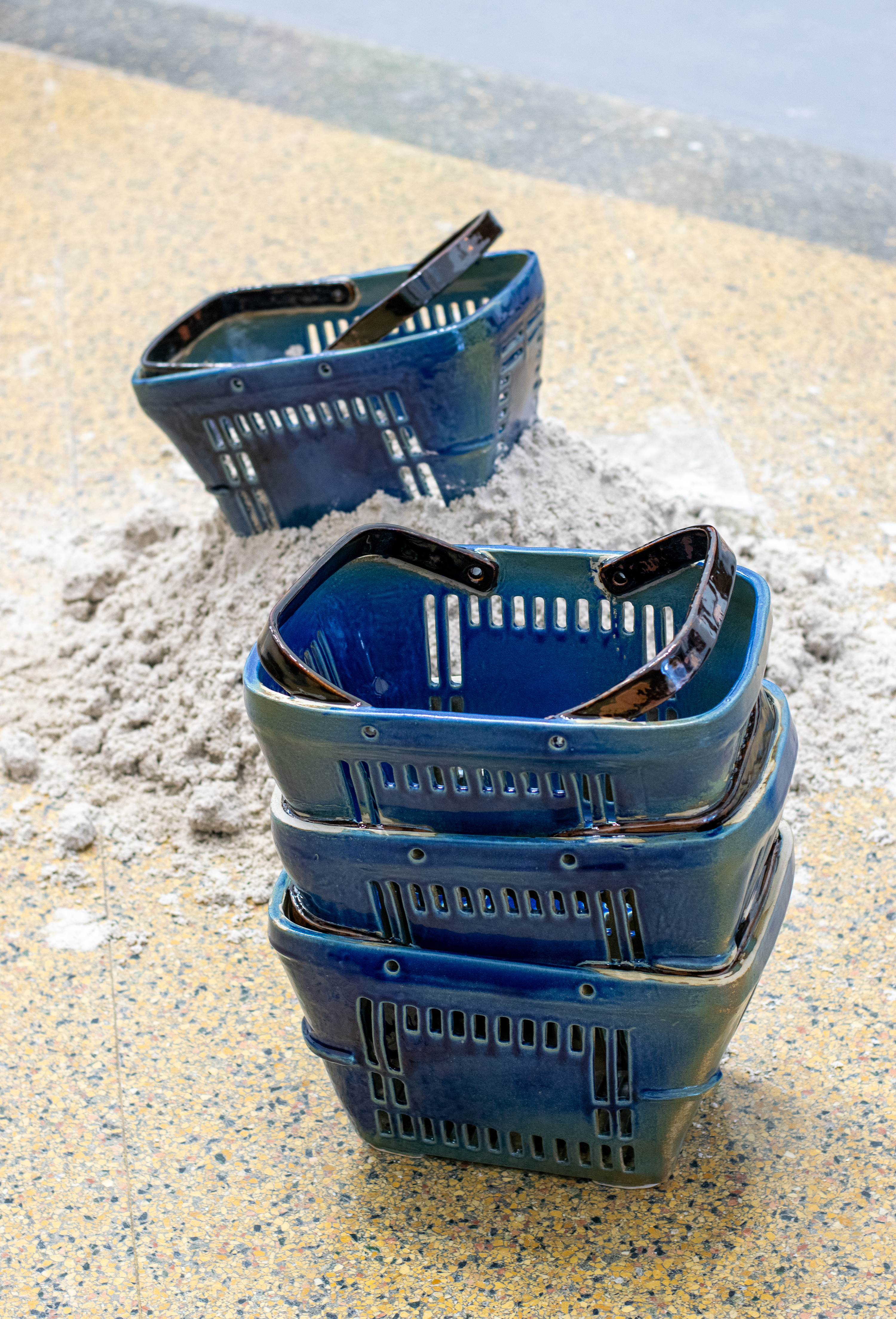
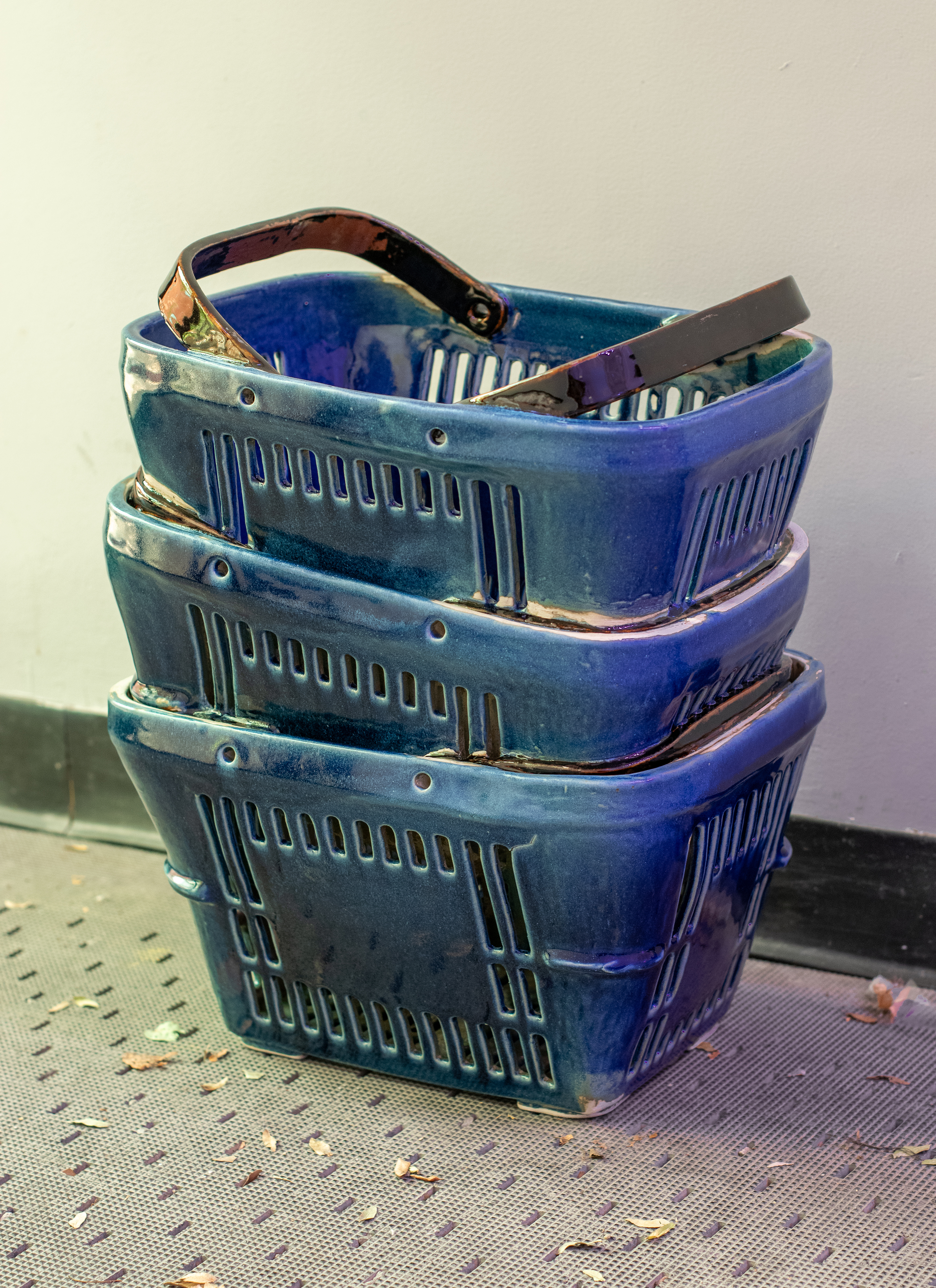

Productivity per hour & average work week 2024: Denmark $87.70, 37.2 hours, United States $79.60, 41.5 hours
2024Glazed ceramic, copper, sand
66” x 24.5” x 19”
Escaping the Panopticon
2024Glazed ceramic, copper
52” x 26” x 0.5”
Out of Office
2024Glazed ceramic, sand
10” x 12” x 2.5”
These three works shown together explore the psychological burdens of working in late-stage capitalism and the desire to break free. Using a surrealistic rendering style, the hamster wheels and hourglass sand piles become metaphors for the never ending treadmill of labor. The titles and eyeballs embedded into the sculptures reference themes of surveillance capitalism, where we work under panoptic conditions or the psychological feeling that we’re always being watched by the boss, encouraging longer and often unproductive hours.
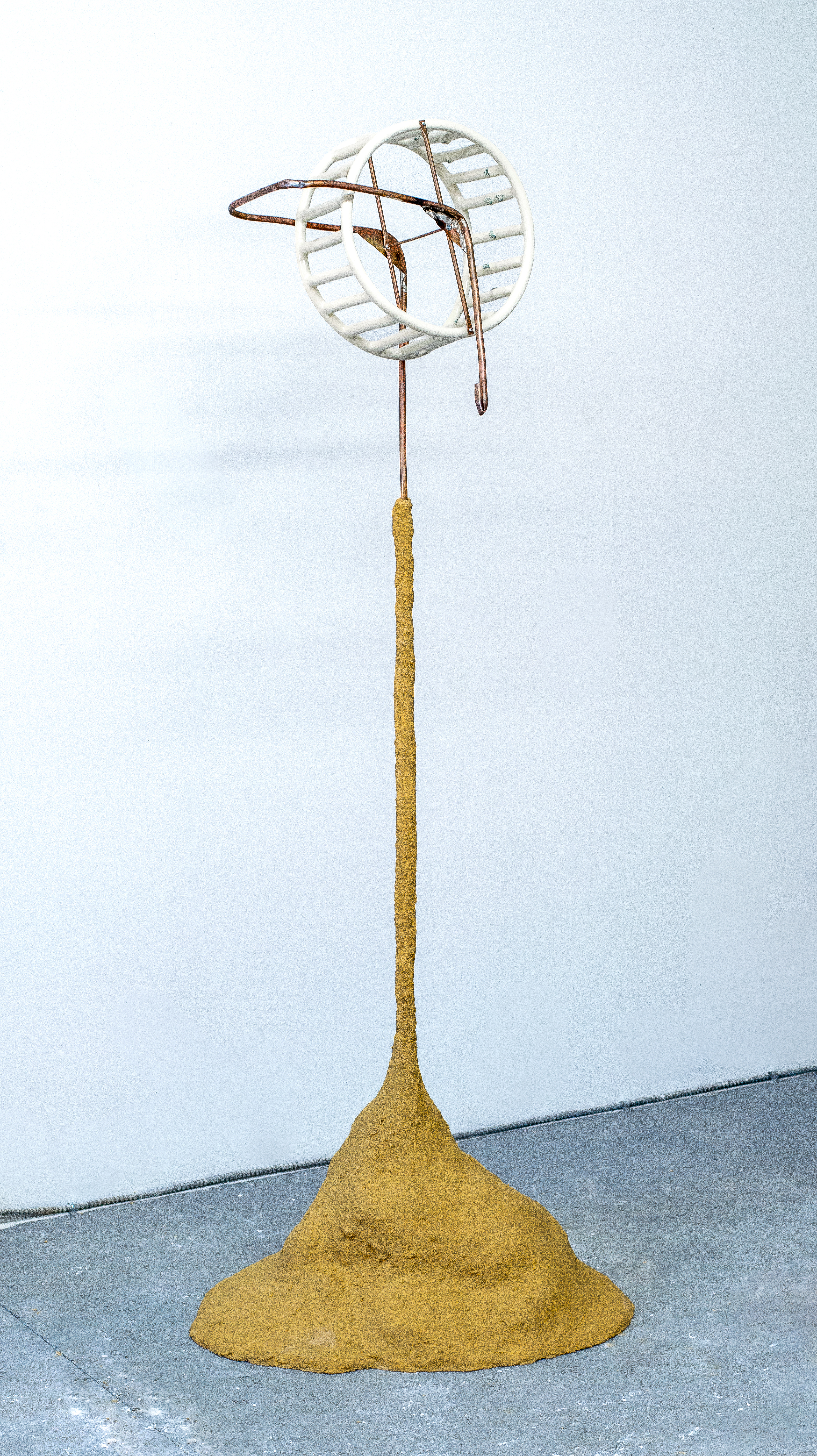



Study for creep rupture 02 & 03
2024
Glazed ceramic, steel, brass
14” x 16” x 8”
11” x 10.5” x 5.5”
Photography credit: Matthew Bailey
